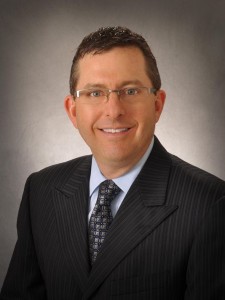
Do wellness programs really produce meaningful results? Many businesses and employees have their doubts. However, organizations that take a more practical view are committed to the cause. Simply put, healthy employees are more productive, absent less often, and serve clients more effectively.
In June, the Wellness Council of America held its annual board retreat at the Mayo Clinic in Rochester, Minnesota. Both WELCOA and Mayo Clinic are leading the evolution of corporate wellness across America.
Many organizations realize that wellness efforts can deliver return on investment, but measuring that ROI has been problematic. A mobile workforce, rising health care costs, rising drug costs and an aging population make comparisons challenging. What has been discovered, though, is that a well-executed wellness strategy improves attraction and retention of employees. Many employees value help with nutrition, exercise, stress reduction, personal development and overall well-being. Personalized programs based on employees’ specific needs and desires are proving to be quite effective.
Several trends are evolving in wellness. One new trend is an understanding that activity is different from physical fitness. A 30-minute workout just can’t significantly improve health if the rest of your day is spent with sedentary work and home habits. The Mayo Clinic and Dr. James Levine are promoting focusing on movement throughout the day through a program called Non Exercise Activity Thermogenesis (NEAT). Let’s face it, we have engineered a lot of activity out of our lives — autos, elevators, and computers are just a few examples of how we’ve decreased movement from our day.
The concept is fairly simple. Analyze your day, then change any sedentary habits you find into more active habits. Standing desks, standing meetings and walking phone calls are just a few ways you can add activity back into your day. Juststand.org and workwhilewalking.com will get you started with ideas. Or search online, “Dr. James Levine” for videos, books and other resources on the topic.
Another area receiving significant attention is resiliency. Our lives can be stressful, and how we think (coupled with other habits) can be harmful at best and debilitating at worst. As humans, we previously used stress (fight or flight) to survive. Today, we often create stress without realizing that much of it is self-induced, brought out by trivial things that we allow to be part of our day. Road rage, work drama and minor relationship issues can create undue stress; and, some, if not most, of the issues don’t really even matter.
Some suggested practices promoted by the Mayo Clinic include deep breathing, meditation, thoughts of gratitude, flexible expectations and healthy sleep habits. Being aware of your triggers and understanding how to improve how you respond to them can make a difference in resiliency or bouncing back. A book written by Dr. Amit Sood, “The Mayo Clinic Guide to Stress Free Living,” is a good resource. Other resources can be accessed online at www.allaboutgratitude.com and www.happify.com.
Although traditional methods such as health assessments, physical fitness, smoking cessation and nutrition are still effective and popular, a customizable program where the employee ultimately designs his own plan is becoming more prevalent. This approach allows the employee to become a more active participant in the program by developing a plan to meet his own needs, increasing the chance that the employee will stay with the program. It takes more effort upfront to have the employee participate in program design, but the strategy has proven far more successful for employee success and satisfaction.
Corporate wellness is no longer a fad or trend. It’s become a strategy for many progressive companies to promote health, engage employees and improve employee attraction and retention. Think about it — companies that invest in improving the health and well-being of their people will become the most preferred places to work. And if employees feel valued and cared for, their levels of satisfaction and performance will improve — which will also result in positive benefits to the employer.
Richard Ollis is CEO of Ollis/Akers/Arney, an employee owned business and insurance advisory firm. He serves on the national board for the Wellness Council of America and attended the annual meeting at the Mayo Clinic in Rochester, Minnesota.
This article appeared in the July 26th edition of the News-Leader and can be accessed online here.
